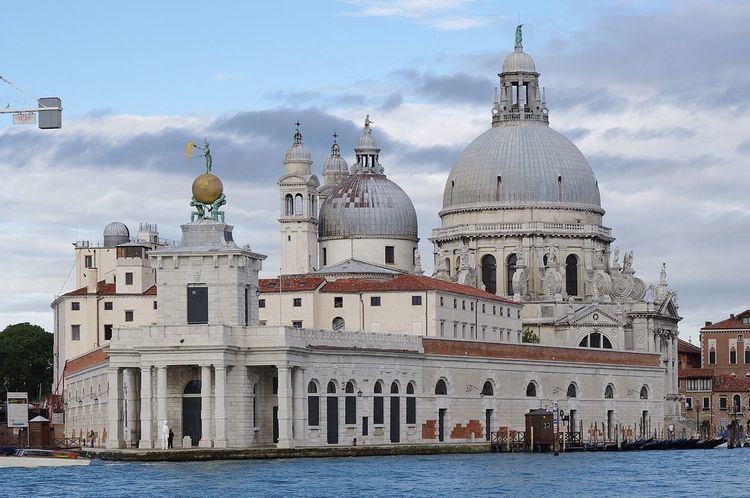Owner City of Venice Phone +39 041 240 1308 | Website Official website | |
 | ||
Established 6 June 2009 (2009-06-06) Province Metropolitan City of Venice Similar | ||
Discover punta della dogana
Punta della Dogana is an art museum in Venice's old customs building, the Dogana da Mar. It also refers to the triangular area of Venice where the Grand Canal meets the Giudecca Canal, and its collection of buildings: Santa Maria della Salute, Patriarchal Seminary of Venice, and Dogana da Mar at the triangle's tip.
Contents
- Discover punta della dogana
- Time lapses punta della dogana and tadao ando
- Geography and history
- Dogana da Mar
- Restoration
- Exhibitions
- References
Time lapses punta della dogana and tadao ando
Geography and history
Punta della Dogana is located between the Grand and Giudecca Canals at the tip of an island in the Dorsoduro district. Adjacent to each other are the Dogana da Mar, Patriarchal Seminary, and Santa Maria della Salute. It is diagonal from the Piazza San Marco.
The point was used for docking and customs as early as the beginning of the 15th century. The temporary structures built to store merchandise and customs workers were replaced by the Punta della Dogana, whose construction began in 1677.
Dogana da Mar
The museum's art is housed in and around the Dogana da Mar building. It was built between 1678 and 1682 as a customs house. The arcade styles reflect their construction in different eras. Atop the building are statues of Atlas, built to represent the supremacy of the Republic of Venice. The two slaves hold a golden ball upon which Giuseppe Benoni's Fortune stands. The 17th-century statue turns in the wind. The last renovation of the building was done by Alvise Pigazzi in 1838.
Restoration
The building was restored by Tadao Ando from January 2008 to March 2009, funded by François Pinault, a French billionaire and art collector. He signed a 33-year agreement with the city. The building had been empty for decades prior, with failed plans to turn it into apartments or a hotel. Dogana da Mar's stuccoed brick exterior was restored without additions, and is the only part of the original structure left intact. Cosmetic imperfections and the stucco were repaired, and bad areas were reinforced with stainless steel anchors, but areas with visible brick were left exposed. The interiors were left bare without surface treatment, and bricks were replaced sparingly. The room partitions from the last two centuries were replaced with parallel, rectangular halls. The roof was replaced by a similar roof with timber gables, with added skylights. The new floors are made of exposed and polished concrete, in some places covered with linoleum. Frank Peter Jäger called these smooth surfaces Ando's trademark, along with glass and steel fixtures that clash with the raw irregularities of the unfinished walls. He added that, for Ando, this combination "symbolizes the union of past, present, and future", the building, his architecture, and the art within it, respectively. Ando wanted to make the western entrance's face out of concrete slabs, but the change was opposed by the city. Exibart's Jacqueline Ceresoli described the building as having "industrial and minimalist soul" with red brick walls. The renovation cost was €20,000,000.
Exhibitions
Complex's Elisa Carmichael called Punta della Dogana's Prima Materia show of about 80 works from the Pinault Collection an "absolute must-see" outside of the 2013 Venice Biennale. Exibart's Jacqueline Ceresoli had similar praise for the show.
Pinault commissioned a statue for the tip of Punta della Dogana from Charles Ray upon receiving approval from the city to start the museum. Ray made an eight-foot-tall boy holding a frog by its leg intended as a public sculpture called Boy with Frog. The sculpture's permit was set to be negotiated four times annually. Boy with Frog was originally encased upon the museum's July 2009 opening after protests following its installation. The city moved in early 2013 to replace the statue with a reproduction of the streetlamp once situated there. Its spokesperson said that the sculpture's installation was designed to be temporary. Ray refused an offer to relocate the sculpture to Palazzo Grassi, opting to put the sculpture into storage. Independent curator Francesco Bonami wrote in La Stampa that the removal was "administrative cowardice" and the lamppost represented "cultural darkness".
